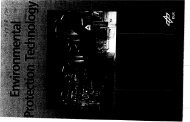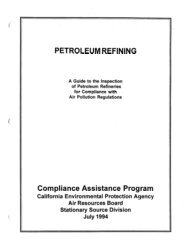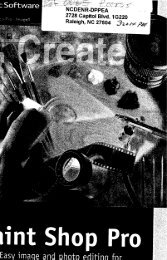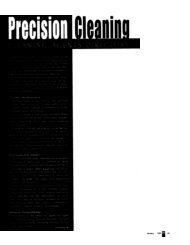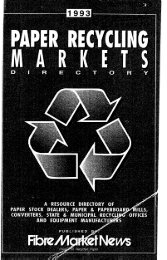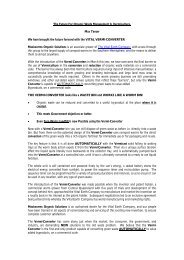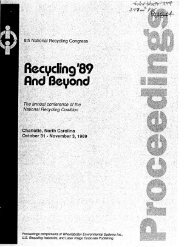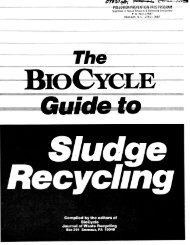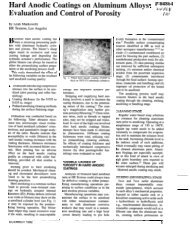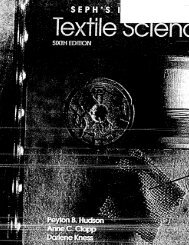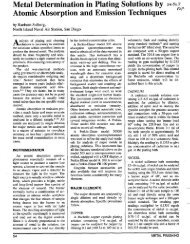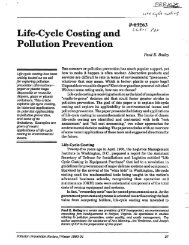Electronic Parts/Guidelines - infoHouse
Electronic Parts/Guidelines - infoHouse
Electronic Parts/Guidelines - infoHouse
You also want an ePaper? Increase the reach of your titles
YUMPU automatically turns print PDFs into web optimized ePapers that Google loves.
PackinglUse: This is the labor involved in actually using a package or container. This should be<br />
compared to the labor of using disposable containers and packaging. This should include labor to<br />
both pack and unpack.<br />
RepairlCleanhg: This is the labor required to repair, refurbish or clean a reusable item, so that it<br />
may be reused.<br />
Disposal: This is the cost to dispose of containers and packaging. A comparison of disposal costs for<br />
reusable items versus disposable items should be made. Included in the comparison should be;<br />
labor costs to sort and place items in appropriate waste containers, compactors or bailers,<br />
lease or purchase costs for special equipment (e.& compactors and bailers), and<br />
costs of waste material pick-up andlor disposal.<br />
EquipmentlTooling: Capital and expense costs for equipment and tools needed to use or make dis-<br />
posable and reusable items should be estimated. In many cases, out-of-pocket cost analyses are used<br />
to compare reusable and disposable programs. If out-of-pocket analyses are used, all tools and equip-<br />
ment can be treated as expenses or out-of-pocket cash flows.<br />
6.3.2 Technical & Business Considerations<br />
The following are some items that should be considered when evaluating, deVelOping or implementing<br />
reusable programs:<br />
Transportation Distance: Physical shipping distance and time greatly effect the inventory pipeline and<br />
the total number of reusable items needed. When shipping distances are short, pipelines usually are<br />
small, and the total number of reusable items is usually small. In addition, short distances result in<br />
lower transportation costs, especially for returning reusable items. Pipeline and return costs are often<br />
the largest costs in a reusable container program.<br />
Example: Local Vendors<br />
Reusable programs often work best when transportation distance is very short. For example, with<br />
packaging programs for supplier parts, it may be easier to implement reusable programs with nearby<br />
or 1 oca1 vendors.<br />
. The pipeline will be short, so there will be fewer reusable items to buy.<br />
Return shipping costs will usually be low.<br />
.<br />
.<br />
.<br />
.<br />
Many suppliers may have their own trucks, so return shipping may be free. This is especially<br />
true when a local supplier has a truck coming back empty, after making a delivery.<br />
With vendors very close, inventory on parts packed in reusable containers is likely to be very<br />
low, because the vendor can make frequent deliveries. The low parts inventory requires fewer<br />
reusable containers. There will be fewer or no containers holding parts in an IBM warehouse.<br />
When the pipeline is small and easy to control, a reusable item is more likely to be used as an<br />
integral part of material handling systems at both the supplier and IBM. This is especially true<br />
with local vendors who make frequent deliveries to IEM. In addition, the vendor is more likely<br />
to accept management responsibility for much of<br />
repairing, scrapping reusable items).<br />
the reusable program (e.g., purchasing,<br />
Part Size: With supplier parts. larger parts are often better candidates for reusable programs, than<br />
smaller sized parts.<br />
There are fewer parts per container, so the containers make more round trips. This is a cost<br />
benefit, if the container is Well designed, very durable, and has a high reuse life. When the life of a<br />
program is close to or shorter than the reuse life of a container or reusable item, a higher number<br />
of reuses makes a reuse program more easily justified.



